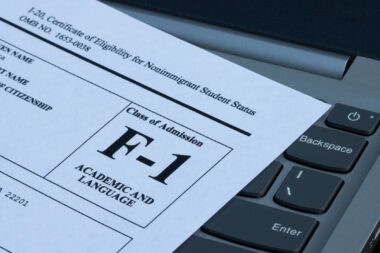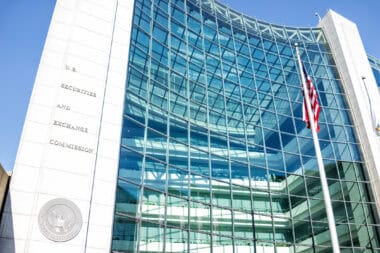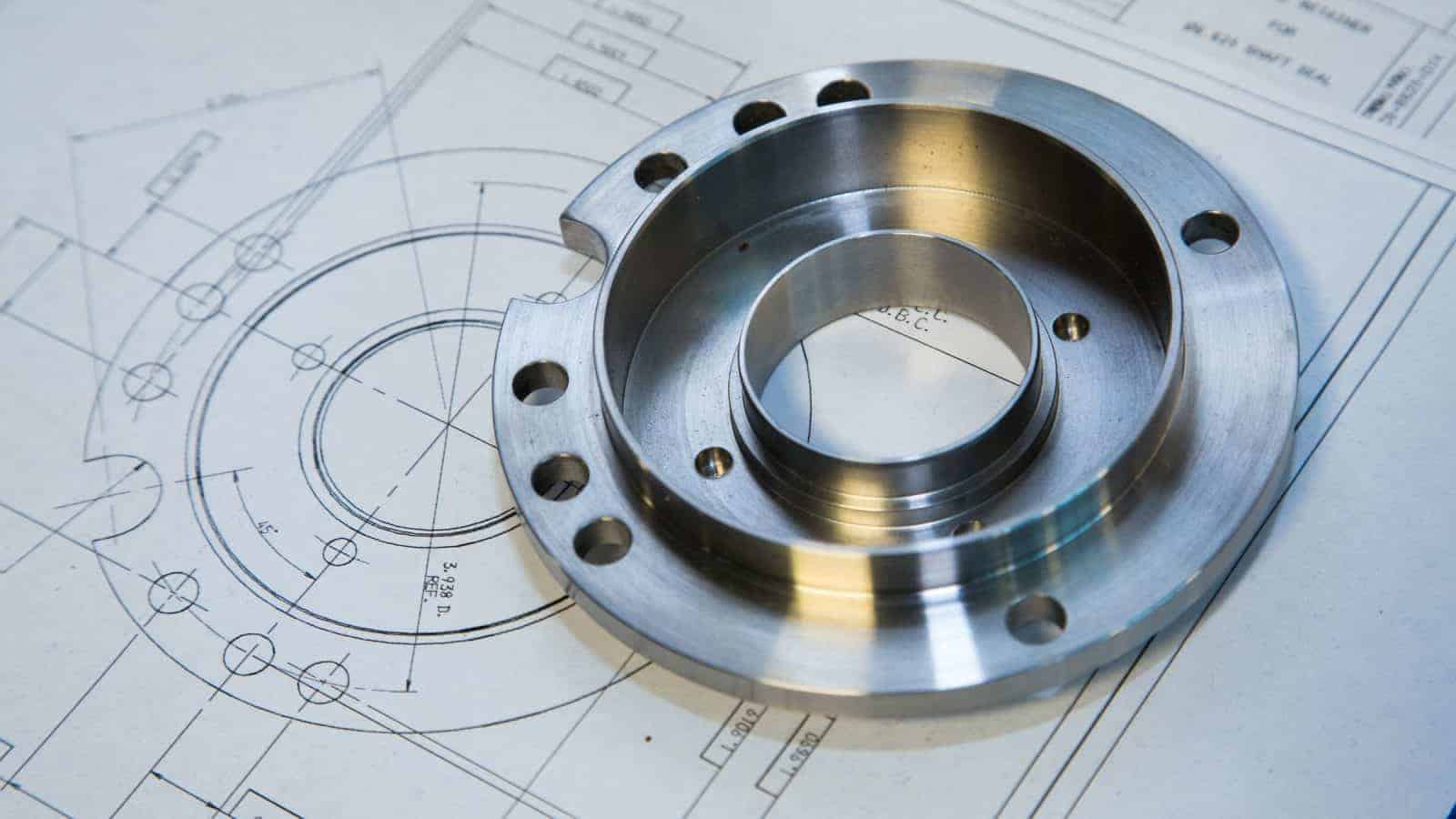DHS Should Reconsider Proposed F-1 Visa Changes

With nearly 400,000 jobs open across the sector, the manufacturing industry in the U.S. needs ongoing access to a robust pipeline of skilled workers—but changes proposed to the F-1 student visa by the Department of Homeland Security threaten to reduce the talent in that pipeline, the NAM said recently.
What’s going on: “The F-1 visa … through its Curricular Practical Training (“CPT”) and Optional Practical Training (“OPT”) and STEM OPT options is a major source of high-skilled talent for the manufacturing industry in the U.S.,” the NAM told DHS in response to the agency’s draft reforms to the visa program.
- “[T]he proposed rule would impose changes that risk diminishing the appeal of an American education, making it harder for students to transition into careers that strengthen U.S. manufacturing. This would have a negative impact on the growth and international competitiveness of manufacturing in the United States, which is at odds with President Trump’s objective to bolster the domestic industry.”
What’s at stake: The primary change under consideration “is the switch of F-1 student visas from a duration of status (“D/S”) that remains in effect for as long as the student is enrolled in an academic program to a fixed time period that corresponds to the program’s length but cannot exceed four years.”
- “This would significantly diminish the attractiveness of U.S. universities for prospective international students, because it is at odds with the length of time that many if not most students take … to actually earn their degrees.”
- That change would also make it harder for international students to secure OPT or STEM OPT extensions, in turn inhibiting their “transition into the U.S. manufacturing workforce.”
Why it matters: “These proposed changes … would weaken manufacturers’ access to a plentiful pool of elite global talent upon which we depend to fulfill President Trump’s vision for a manufacturing renaissance in America,” the NAM concluded.
NAM to SEC: Prioritize Capital Formation and Regulatory Rebalancing

In recent years, the Securities and Exchange Commission has moved away from its charter to “facilitate capital formation, protect investors and maintain efficient markets”—but it can return to its original mission by adopting a series of reforms suggested by the NAM.
What’s going on: Following the SEC’s recent release of an updated regulatory agenda, the NAM submitted a 23-page letter with detailed recommendations for rightsizing regulatory burdens and supporting capital formation for manufacturers.
- Over the next six months, the SEC plans to propose rulemakings on shareholder proposal modernization, the simplification of filer status for reporting companies and the rationalization of disclosure practices.
- The NAM made specific recommendations for those rulemakings and suggested additional reforms for the SEC to consider.
What we said: To foster “growth at companies of all sizes,” the NAM suggested the SEC should adopt reforms to:
- Promote capital formation and improve the regulatory environment for IPO companies and smaller manufacturers, including a reduction in Sarbanes-Oxley Act audit attestation burdens;
- Depoliticize the shareholder proposal process by allowing the exclusion of environmental, social and political proposals unless they are material to a company;
- Provide meaningful oversight of proxy advisory firms, which continue to exercise outsized influence over public companies and their shareholders—despite the firms’ inflexible policies, lack of transparency and glaring conflicts of interest;
- Increase ownership transparency to improve investor outreach by public companies; and
- Consider additional changes to existing rules, including rescinding stringent rules on the reporting of cybersecurity incidents, scaling back conflict minerals disclosure requirements and modernizing executive compensation rules.
Why it’s important: Taking these steps will “prioritize capital formation and create a more hospitable environment for public companies,” the NAM told the SEC.
Shutdown Watch: What to Know Right Now

As the federal government shutdown moves into its second week, there’s no sign of “political or practical consequences that would create enough pressure to break the impasse” (The Wall Street Journal, subscription).
What’s going on: “All signs point to another week of posturing and repeat Senate votes that fail to get the 60 votes needed to reopen the government. Congressional leaders in both parties insist that they have the upper hand and that the other side bears the blame for the shutdown.”
The background: Funding for much of the federal government lapsed on Sept. 30 just ahead of the new fiscal year that started on Oct. 1.
- A House-passed measure to extend current funding levels to mid-November is stalled in the Senate.
- House members left Washington Sept. 19 and have yet to return.
What could be next: Agencies could begin federal worker layoffs if negotiations stall. But “two labor unions have filed a legal challenge to the possible mass firings,” and some scholars have questioned the legality of such terminations during a shutdown.
The effects so far: “[H]undreds of thousands of federal workers have been furloughed and others are working without pay. The Bureau of Labor Statistics didn’t release the monthly jobs report on its usual schedule. Some government-funded facilities, including the National Arboretum and National Gallery of Art in Washington, closed to the public.”
- Other functions, including Social Security payments, are continuing as usual.
What could be coming: If not resolved by midmonth, the shutdown will start “weighing on consumer spending and economic growth,” as federal workers will begin foregoing paychecks.
Questions and concerns: If your operations have been impacted, please reach out to your NAM membership representative.
CDC Committee Recommends Changes to Childhood Vaccine Schedule

Late last week, the Advisory Committee for Immunization Practices, which advises the Centers for Disease Control on vaccine safety and efficacy, recommended changes to the childhood vaccine schedule.
What’s going on: ACIP voted on a recommendation that children age 4 and under no longer receive the combined measles-mumps-rubella-varicella vaccine but instead receive two separate shots: one to vaccinate against measles, mumps, and rubella, and a separate varicella (chickenpox) shot.
Why it matters: The Vaccines for Children Program, and other federal health programs such as Medicaid, use ACIP recommendations to determine vaccine coverage. The committee’s vote—assuming the CDC director approves the recommendation, which is expected—means that these programs likely will no longer cover the MMRV shot for children under the age of 4.
- The combined MMRV vaccine has been proven safe and effective, according to the CDC itself.
- The vote also means private health insurers are no longer required to cover these vaccines. However, America’s Health Insurance Plans (AHIP) said its members will continue coverage of these and other previously recommended vaccines through the end of 2026.
What’s next: Acting CDC Director Jim O’Neill must approve ACIP’s recommendations. In the past, CDC directors have almost always taken recommendations from ACIP.
- Some states, including California, Colorado, Oregon, Nevada, and Washington, have issued their own guidance in an attempt to maintain access to these vaccines.
The NAM says: “Vaccines have revolutionized public health, saved millions from serious and deadly illnesses, and insulated our economy from destabilizing epidemics,” said NAM Vice President of Domestic Policy Jake Kuhns. “Continued access to immunizations is important to help keep manufacturing workers and their families safe and healthy.”
Shipping Firm Hacking Is on the Rise

Incidents of high-value “man in the middle” cyber fraud have risen in recent years, taking a financial toll on global shipping (BBC).
What’s going on: “This type of fraud involves a hacker being able to intercept the communication between two parties, such as emails. The criminal then impersonates both in order to try to steal [global shipping firms’] sensitive information, such as log-in details or financial data, or even to take control of a company’s computer system.”
- The number of attacks is increasing, having gone from 10 in 2021 to at least 64 in 2024, according to a research group at NHL Stenden University of Applied Sciences in the Netherlands.
Who’s doing it: “Many incidents are linked to the governments of four countries . . . Russia, China, North Korea and Iran . . . Other attacks are purely for financial extortion, be it gangs from Nigeria or elsewhere.”
Why it’s important: “Law firm HFW’s data shows that such hacking is a growing problem for the shipping sector, both attacks on ships and ports. It says that between 2022 and 2023 the cost of dealing with an attack doubled to an average of $550,000.”
- In those cases where the firms are unable to get rid of the cyber criminals and are forced to pay them, “HFW says the average cost of a ransom payment is now $3.2 million.”
A big target: About 80% of the world’s trade travels by ocean, and disruptions caused by hackers can make shipping firms’ costs increase enormously, “leav[ing] them short of capacity.”
Why it’s on the rise: The shipping industry’s increasing digitalization means “there are now simply more routes for hackers to use . . . while new communication technologies, Elon Musk’s Starlink satellite service, for example, have meant that ships have become more connected to the outside world. And therefore more hackable.”
- Compounding the problem is that adoption of digital technologies in the sector often happens in “a piecemeal way, and involves technology that can go rapidly out of date”—in large part because firms can’t afford to have their ships out of commission long enough for updates.
- Also, sensors used by ships to monitor emissions transmit data hackers can often access.
How it’s being addressed: “Ship management systems are now required—rather than simply advised— to include increasingly stringent cyber security measures, ranging from basic security hygiene to more technical operational and IT measures.”
NAM in action: The NAM supports legislation to crack down on supply chain theft and fraud and is working with industry partners to highlight the growing issue for policymakers.
New Section 232 Investigation Could Stall Investments in U.S.

The Commerce Department published a FRN today indicating it opened an investigation on September 2 “to determine the effects on the national security of imports of robotics and industrial machinery.”
A wide scope: The NAM’s back-of-the-envelope calculation finds that this could affect some half a trillion dollars in manufacturing equipment and inputs, the largest 232 investigation to date.
- The FRN cites examples of products in the scope of investigation, including robots, programmable computer-controlled mechanical systems, CNC machining centers, turning and milling machines, grinding and deburring equipment, and industrial stamping and pressing machines.
Timing: Public comments are due in 21 days, or by October 17.
A twist: In addition to comments on the role of foreign supply chains in meeting U.S. demand for such products, this FRN probes for impacts on employment from use of robotics and the ability of foreign actors to weaponize foreign-built robotics and machinery.
- Please thoroughly read the lengthy list of criteria for consideration of tariffs on these products as you develop company-specific comments.
What’s next: The NAM team will solicit specific input as it develops its submission, but you are welcome to start sending insights, ideas and data to NAM Vice President of International Economic Policy Andrea Durkin immediately.
Another FRN: Commerce also published a second FRN today indicating that it opened an investigation on September 2 to determine the effects on national security of imports of personal protective equipment, medical consumables and medical equipment including devices.
- The FRN cites examples of products in the scope of this investigation, including respirators, syringes, infusion pumps, medical supplies common in all hospitals, diagnostic and laboratory reagents and durable patient equipment such as wheelchairs, and medical devices, including those used to diagnose, monitor and treat patients such as coronary stents, insulin pumps, blood glucose monitors, MRI machines and more.
Timing: Public comments are again due in 21 days, or October 17.
Get in touch: The NAM team will solicit input on this FRN as it develops a submission, but again your ideas and insights are welcome as soon as possible. Please contact Senior Director of International Policy Anne Collett.
The NAM says: “Manufacturers are working to increase capacity in the United States—and domestic production of robotics and industrial machinery can enhance both our industrial might and our national security. However, tariffs on critical manufacturing inputs would significantly increase costs on equipment and machinery on factory floors across the country, which could in turn stall investment in new plants and equipment right here at home at a time manufacturers want to help President Trump create more U.S. manufacturing output and jobs,” NAM President and CEO Jay Timmons said in a public statement.
- “The challenge facing the United States today is that our domestic industry can produce at most 84% of the inputs manufacturers need to build, modernize and operate our facilities and to increase production and output. That is true even if every manufacturer in the country is working at full capacity.”
- “That means that, at an absolute minimum, 16% of critical manufacturing inputs must be imported to manufacture more here in the U.S. That’s why manufacturers have offered practical pro-growth solutions to bring in these essential inputs without adding cost burdens, while rewarding manufacturers that invest, expand and create new jobs at home.”
New 232 Tariffs Could Stall Manufacturing Investment in U.S.
Washington, D.C. – National Association of Manufacturers President and CEO Jay Timmons released the following statement in response to the Commerce Department’s investigation into potential tariffs on robotics and industrial machinery:
“Manufacturers are working to increase capacity in the United States—and domestic production of robotics and industrial machinery can enhance both our industrial might and our national security. However, tariffs on critical manufacturing inputs would significantly increase costs on equipment and machinery on factory floors across the country, which could in turn stall investment in new plants and equipment right here at home at a time when manufacturers want to help President Trump create more U.S. manufacturing output and jobs.
“The challenge facing the United States today is that our domestic industry can produce at most 84% of the inputs manufacturers need to build, modernize and operate our facilities and to increase production and output. That is true even if every manufacturer in the country is working at full capacity. That means that, at an absolute minimum, 16% of critical manufacturing inputs must be imported to manufacture more here in the U.S. That’s why manufacturers have offered practical pro-growth solutions to bring in these essential inputs without adding cost burdens, while rewarding manufacturers that invest, expand and create new jobs at home.”
-NAM-
The National Association of Manufacturers is the largest manufacturing association in the United States, representing small and large manufacturers in every industrial sector and in all 50 states. Manufacturing employs nearly 13 million men and women, contributes $2.90 trillion to the U.S. economy annually and accounts for 53% of private-sector research and development. The NAM is the powerful voice of the manufacturing community and the leading advocate for a policy agenda that helps manufacturers compete in the global economy and create jobs across the United States. For more information about the NAM or to follow us on Twitter and Facebook, please visit www.nam.org.
6: IAEA: Worldwide Nuclear Generation Capacity Set to Skyrocket

Global nuclear operational capacity will increase more than 100% in the next 25 years, according to new International Atomic Energy Agency projections.
What’s going on: “For the fifth year in a row, the [IAEA] has revised up its projections for the expansion of nuclear power, as global momentum continues to build behind this clean and secure source of energy.”
- By 2050, capacity will reach 2.6 times its 2024 level, “with small modular reactors (SMRs) expected to play a pivotal role in this expansion.”
- The projections—which include all “operating reactors, possible license renewals, planned shutdowns, power uprates to increase output levels and plausible and ongoing construction projects foreseen for the next few decades”— are included in the IAEA’s annual report, released earlier this month at the 69th IAEA General Conference in Vienna.
The current state: By the end of last year, there were 417 nuclear power reactors in operation worldwide, with a capacity of 377 gigawatts electric.
- In the low-case projection, nuclear electrical-generating capacity is expected to increase to 992 GW(e), while in the high-case projection, it’s slated to go up to 561 GW(e).
Why it’s important: “As a clean, safe and abundant energy source, nuclear is a key piece of the successful all-of-the-above strategy the U.S. needs to meet growing energy demand that will power growth in domestic advanced manufacturing,” said NAM Director of Energy and Resources Policy Michael Davin.
Dallas Fed Survey: Tariffs, Uncertainty Hamstring Energy Production

Traditional energy exploration and production in the U.S. declined slightly in the third quarter, as oil and gas executives reported rising concern about tariffs and trade uncertainty—and decreasing optimism about the state of the industry (POLITICO Pro, subscription).
What’s going on: A quarterly survey of oil and gas companies released today by the Federal Reserve Bank of Dallas quotes industry executives who pointed to concerns about various administration policies, from tariffs to energy.
- The survey of 139 energy-firm executives in northern Louisiana, Texas and southern New Mexico found that oil companies were drilling less as the administration’s 15% tariff on imported steel required for oil-and-gas infrastructure continued.
- The survey’s company index also slipped, from -6.4 in Q2 to -17.6.
Why it’s important: “Oil executives told the Dallas Fed earlier this year that Trump’s push to lower fuel prices, which lessens the economic incentive for producers to drill, was incompatible with his stated desire to increase production.”
- Tariffs on many imported goods have increased the cost of drilling “at a time when producers are struggling with an oversupplied market, sluggish demand and weak prices.”
What they’re saying: “Tariffs are increasing our supply costs,” said one oil-and-gas support services firm executive.
- “The administration is pushing for $40 per barrel crude oil, and with tariffs on foreign tubular goods, [input] prices are up, and drilling is going to disappear,” an exploration and production company leader said in his survey response. “The oil industry is once again going to lose valuable employees.”
- Said another: “The uncertainty from the administration’s policies has put a damper on all investment in the oilpatch. Those who can are running for the exits.”
NAM Praises Interior’s Mineral List Expansion, Presses for More Additions

“Addressing access to critical minerals must be a top priority for the Department of the Interior to increase manufacturing productivity, lower energy costs, spur greater domestic refining, drive new product development and strengthen our global competitiveness,” the NAM told the department this week.
What’s going on: The NAM filed comments this week on the U.S. Geological Survey’s draft 2025 Critical Minerals List, commending the agency for adding copper and potash while urging further action in designating key materials that underpin manufacturing in America.
Why it matters: Manufacturers rely heavily on critical materials and minerals to make a wide array of products.
- These include aircraft and defense systems, automotive parts and vehicles, electric grid components and other energy technologies, robotics and industrial automation, personal electronics and more.
The win: The NAM has long advocated the addition of copper to the USGS list, calling this action a clear win for manufacturers.
- “Without a robust copper supply chain in the short and medium terms, manufacturing in America will not be able to reach its potential,” the NAM said.
- Additions of potash, silicon, silver, lead and rhenium are also welcome—as these minerals are critical to unleashing domestic energy dominance and reducing our reliance on imports of essential materials.
The minerals: “Manufacturers rely on a sustainable and reliable supply chain of the critical minerals that are listed within the USGS’s Critical Minerals List,” the NAM said.
- Aluminum plays a vital role in helping the U.S. meet its surging demand for energy, which is driven by data center growth and increased electrification. The NAM emphasized that aluminum is “a key input in energy storage technologies, transmission, transformers and commercial and residential wiring, all of which will be critical to this administration’s strategy to power American energy dominance.”
- Lithium is also critical to energy and national security in the U.S. “The NAM supports maintaining lithium on the USGS Critical Minerals List and would urge continued engagement with the industry to understand the implications of disruption to or negligence of lithium supply chains,” the NAM said.
But also: The NAM urged the USGS to go further by adding phosphate rock, boron, molybdenum, tellurium, arsenic and electrical steel to ensure the Trump administration can respond to the immediate needs of the country as they arise.
Need for alignment: The NAM emphasized the need for alignment with the Department of Energy’s list to eliminate confusion and ensure consistent access to federal programs. It commended the administration last month when DOI announced the additions of copper and potash to its list.
- “While the proposed action to update the USGS list will indeed bring the two lists into greater alignment, further actions can be taken to ensure all minerals and materials designated by either DOI or DOE will have the same supply chain protections, incentives and streamlined permitting,” the NAM said.
- These further actions include coordinating and data sharing to mitigate confusion, as well as working with Congress to issue a Statement of Administration Policy in support of the Mineral Consistency Act, which would eliminate the disparities between the two lists.
What’s next: As part of the administration’s goals to expand manufacturing capacity in the U.S., the NAM’s comments will help shape how the government secures critical mineral supply chains for years to come.
